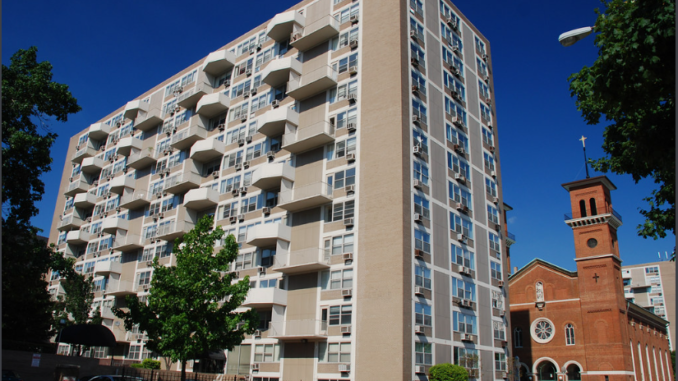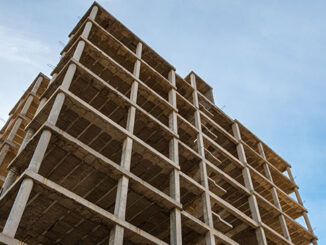
With more remote workers, office owners are turning to multifamily as an alternative for unused space, says Marni Lefkowitz Ahram of Shapiro, Lifschitz & Schram.

It is not news that businesses are having trouble convincing their employees that it is safe and beneficial to return on a full-time basis to the office even as the Coronavirus becomes a mainstay and vaccination rates improve. Labor market pressure and employment regulation has made it difficult for businesses to threaten an employee’s job security if the employee is not keen to return to an office environment with co-workers. The current middle ground appears to be a hybrid of in-office and work from home (WFH).
Office building tenants have been renegotiating their leases, forcing some owners to seek mortgage loan modifications. The current reality is that office vacancy rates in major U.S. cities are at the highest levels in a generation, and the general sense of the urban commercial real estate pundits is that the younger generation of office workers will never be the five-day-a-week office workers their parents have been. As a result, many office building owners, particularly in dense urban cores, are shifting course and either entirely or partially repositioning office buildings for alternative uses. The countervailing shortage of affordable housing supply in these markets, in which many of the would-have-been office workers will now be working from home, have resulted in residential conversions being the adaptive use strategy “du jour” for urban U.S. markets.
Conversion Potential
The most extreme repositioning, short of demolition, is adaptive reuse involving the gutting and reconstruction of office buildings, leaving the building shell and accessways but retooling the interiors for industrial, warehouse or residential use. The choice of new use depends on local market demand and economics, but industrial and warehouse uses often present logistical challenges in dense urban environments. A residential conversion in a dense urban center with strong housing demand tends to underwrite better than industrial and warehouse use—despite high conversion costs, income tends to be less susceptible to vacancy risk.
Converting a commercial building for residential use is not a new phenomenon. Small and mid-sized urban and near-in suburban markets have experienced residential conversion trends a few times over the past 40-plus years, for instance, by repurposing empty waterfront or agricultural warehouses into loft-style living and entertainment districts, and by leveraging incentives for maintaining historically significant structures that are otherwise outmoded office buildings and therefore all but vacant. What is different now, though, is that the residential conversion trend is building steam in the concentrated urban cores of cities such as Washington, D.C.; Manhattan; Atlanta; Chicago and Los Angeles.
Not every urban office building is positioned well for conversion, though, and it is not advisable to proceed down this path without the assistance of an experienced conversion developer and a deep understanding of the challenges that might be faced.
Experienced Assistance
CRE brokerages in urban areas, such as CRESA, are now offering commercial building owners enhanced analyses, consulting, repositioning and even construction oversight services to evaluate, understand and then help navigate the transition of empty or underutilized office space into a more economically efficient use. For example, an owner needs to consider whether the surrounding businesses, transportation options and neighborhood attributes (i.e., green space) will draw new residents who are willing and able to pay rents sufficient to justify the conversion cost.
An evaluation of the local political climate regarding CRE and how a building is zoned will inform an owner’s strategy for pursuing any changes needed to the building’s current zoning to permit the conversion to residential use. While tax generated from office uses is typically higher than tax generated from residential use, urban governments may be considering legislation to offer, or are already offering, housing incentives to residential developers to meet a real or perceived housing shortage, or to reposition certain urban core neighborhoods into more livable neighborhoods.
Some cities and their governing bodies, including Los Angeles and the New York City Council, have already established agencies and earmarked funds for, or proposed laws that would result in government resources being allocated to, evaluating and facilitating residential adaptive reuse. It also helps to understand up front the local community appetite, including merchant association support, for a residential conversion. The building owner will need to engage a local land use consultant or attorney to guide it through the political and community landscapes, as well as the zoning, entitlement and permitting process.
Knowing the Market
Underwriting the costs of a conversion requires understanding not just local residential market and political trends, but also economic data and available financing. Residential use is likely to reduce net operating income from a building, at least until a few months following stabilization, so the valuation risk in maintaining the building for office use must be greater than the long-term residential use valuation risk used to justify conversion costs and lower upfront income, depending on the owner’s anticipated hold time. Preserving flexibility is also advisable. If local laws restrict conversions of for-rent residential buildings into for-sale condominiums, an up-front “shelf” condominium may be worth some front-loaded additional cost to preserve the building’s future for-sale market value.
Additionally, the construction costs to convert an urban office building to multifamily may be more extensive than anticipated. While some standard residential building amenities—such as fitness rooms, interior garages and shared social and office spaces—may be a natural fit into converted office buildings, usable roof area, dog parks and community pools, may not be as easy to integrate into the converted building shell. Particularly in older office and industrial buildings, original building materials may have included asbestos and lead pipes, which are costly to remove or abate before a building can be used for housing. Fewer windows and closely adjacent commercial properties will mean less interior light, and major building systems and supports may need to be relocated, at substantial cost, to accommodate more efficient and desirable living spaces.
City dwellers are often looking for more climate-friendly and sustainably designed buildings, which can be costly to implement in older buildings built with heavier materials. However, if a building is protected by historic preservation laws, there may be opportunities for owners to access tax incentives or credits to offset costs by preserving the historically significant elements of the building. Owners should also keep in mind that, with interest rates going up, construction and permanent lending is not as attractive as in recent years, and federal agency lending for multifamily units may offer better rates and loan terms. Inflationary trends and a tight supply chain are currently challenging all reconstruction and new construction in the U.S. market.
If an office building owner determines that a residential conversion will be the highest, best use of the building, then it is strongly recommended that they partner with a developer, or retain team members, who are experienced in urban residential conversions. This background and knowledge base will guide the process of transforming the existing urban property in a more efficient manner.
Source: Multihousingnews.com



